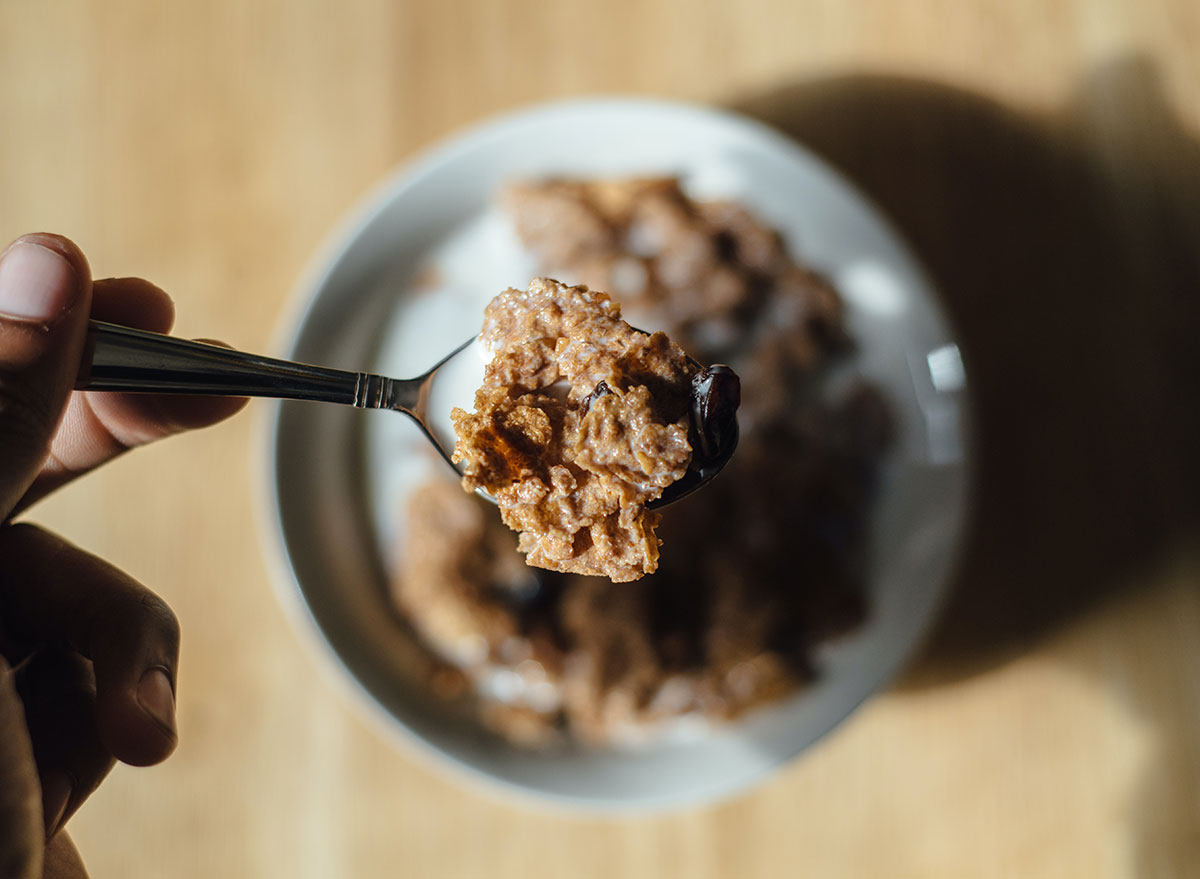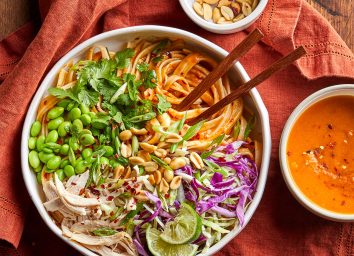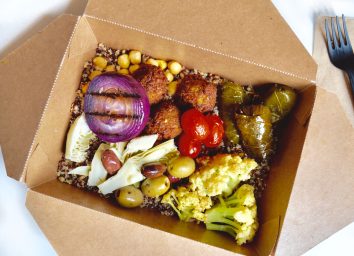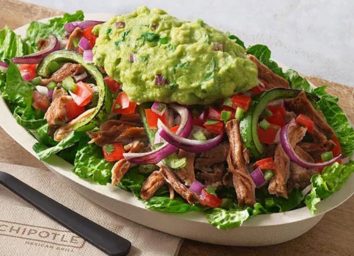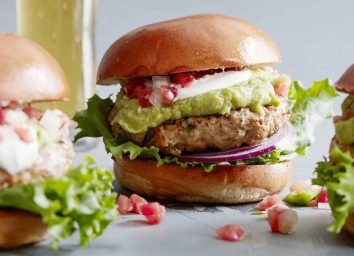25 Eating Rituals for a Flat Belly
So you’ve been slipping more flat-belly superfoods into your diet. You’ve been diligently sticking to your fitness or yoga plan. But what if we told you there are simple, practically effortless tricks you can sneak into your daily life to lose weight and get that flatter tummy without even trying?
The best way to get a flatter stomach isn’t solely on eating less—it’s also by eating smarter. Read on for our favorite flat belly secrets from top nutritionists and food experts. Incorporate these eating rituals into meal times to lose weight, and you’ll be on your way to meet your goals before you know it. While you’re making these changes, be sure to try out the 21 Best Healthy Cooking Hacks of All Time.
Incorporate diuretics into every meal
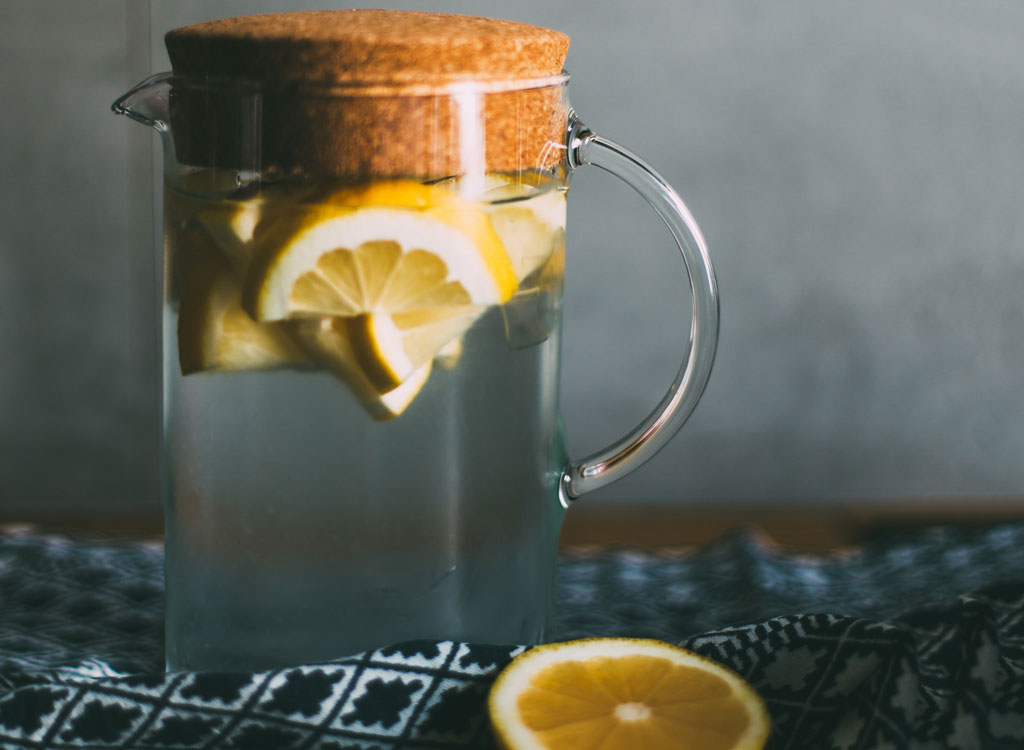
It might not sound very exciting, but incorporating diuretics into breakfast, lunch, and dinner may help promote a flatter tummy. “Lemons are a natural diuretic, which is often why lemon juice is recommended to be squeezed in water during a cleanse,” says Rebecca Lewis, RD at Hello Fresh. “Beets, parsley, and asparagus are also good food sources to help us quickly pass the extra water we might be hanging onto when our diets have been high in salt.”
Big event? Eat plenty of produce the day before
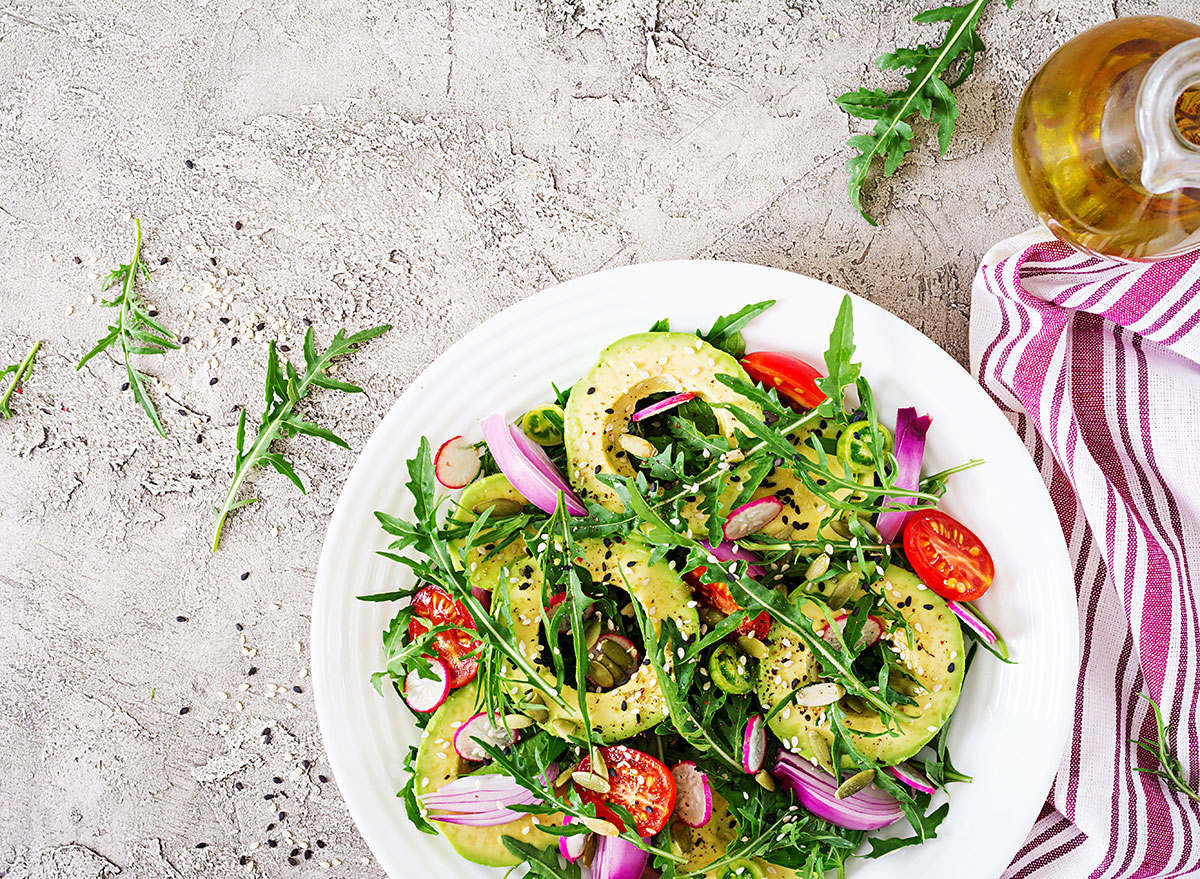
“This will increase your fiber intake, which will help flush waste from your colon and rid you of those associated unsightly gut bulges,” say The Nutrition Twins, Lyssie Lakatos, RDN, CDN, CFT and Tammy Lakatos Shames, RDN, CDN, CFT, and authors of The Nutrition Twins’ Veggie Cure.
Find your magic potion
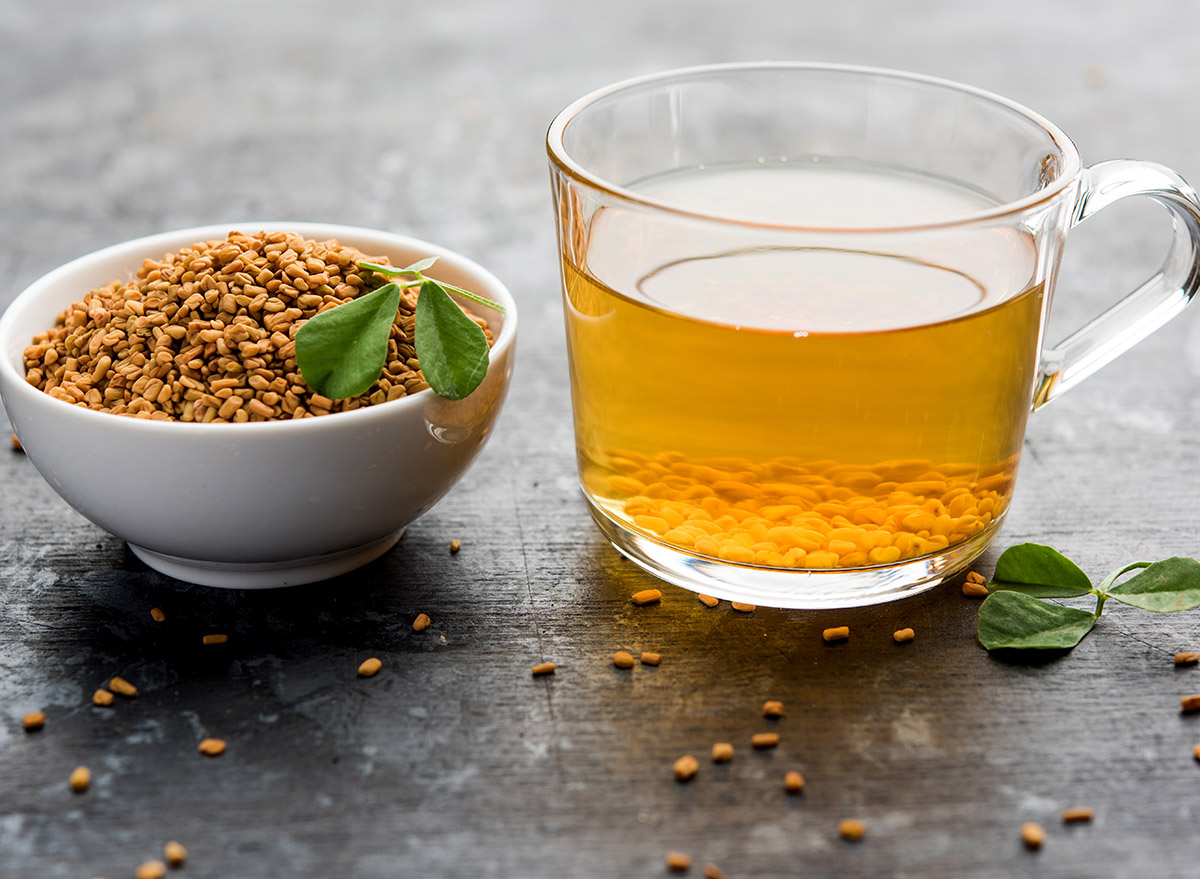
It sounds silly, but once you find a food or drink that seems to instantly detox you, it can be so motivating to stay on track with your other slim-down efforts! “Feeling bloated and full? I hate that!” says Kelly Choi, author of The 7-Day Flat-Belly Tea Cleanse. “But tea can be to help you lose weight and make you feel less puffed up. I use this lemon tea smoothie to combat that huge blimp sensation.”
Eat on small plates
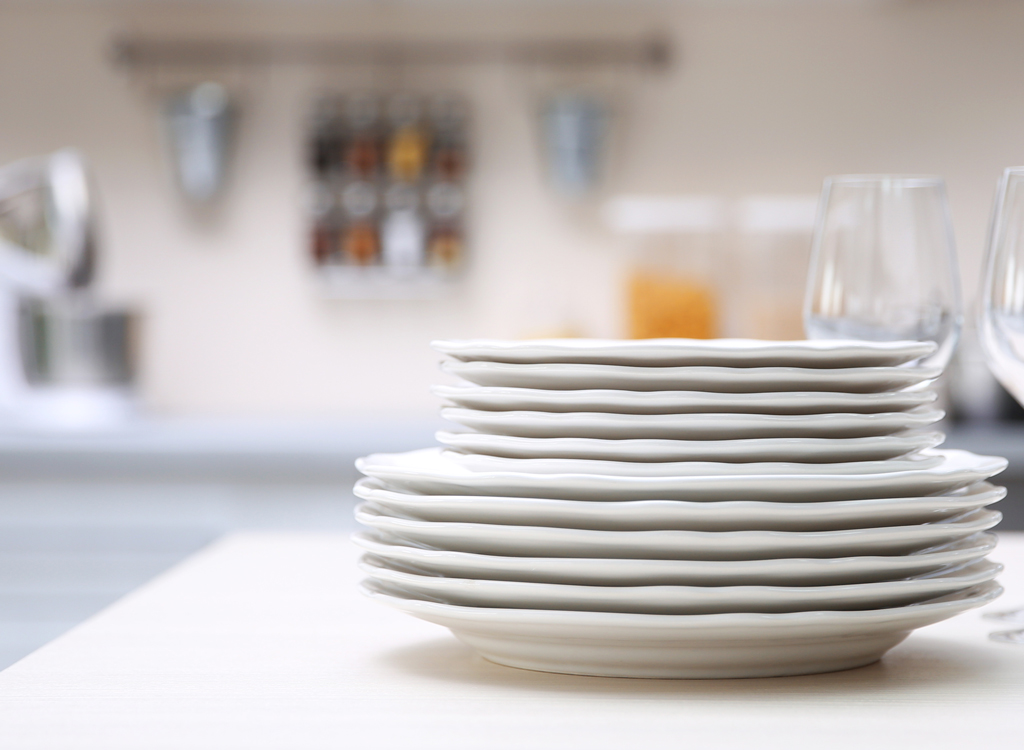
Ever notice that when you’re at a friend’s place for a party or waiting in line at a buffet that you load more food on your plate than you would normally? It may just be because you grabbed a bigger plate, you want to stack it on up with just about everything. Using smaller plates is #5 on our list of 50 Best Weight Loss Tips, so perhaps it’s time you invested in smaller servingware!
“Research has shown that people consume less when they eat on smaller plates. Starting small makes it less likely you will go for seconds, and forces you to check in once the plate is cleared before jumping in for seconds,” says Lisa Hayim, registered dietitian and founder of The Well Necessities.
And make them red plates
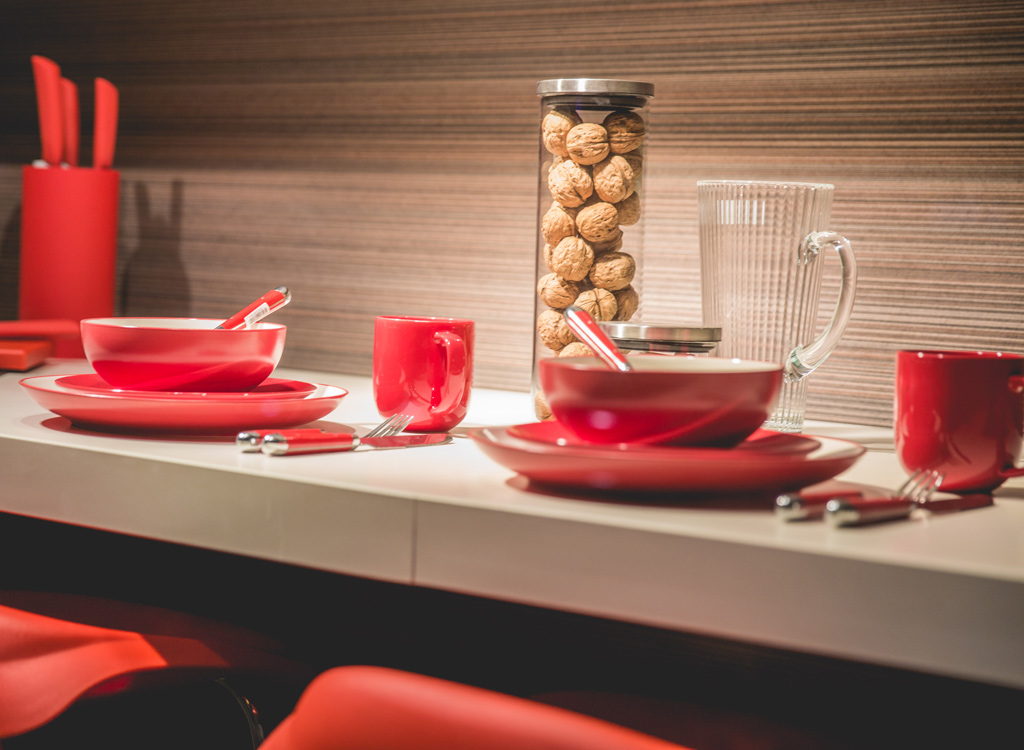
Sound quirky? Don’t knock it until you try it out for yourself. “Red means ‘Stop!’ in our brains! Studies have shown those who use this color plate end up eating less compared to other plate colors,” says Lewis.
Swear off the salt shaker
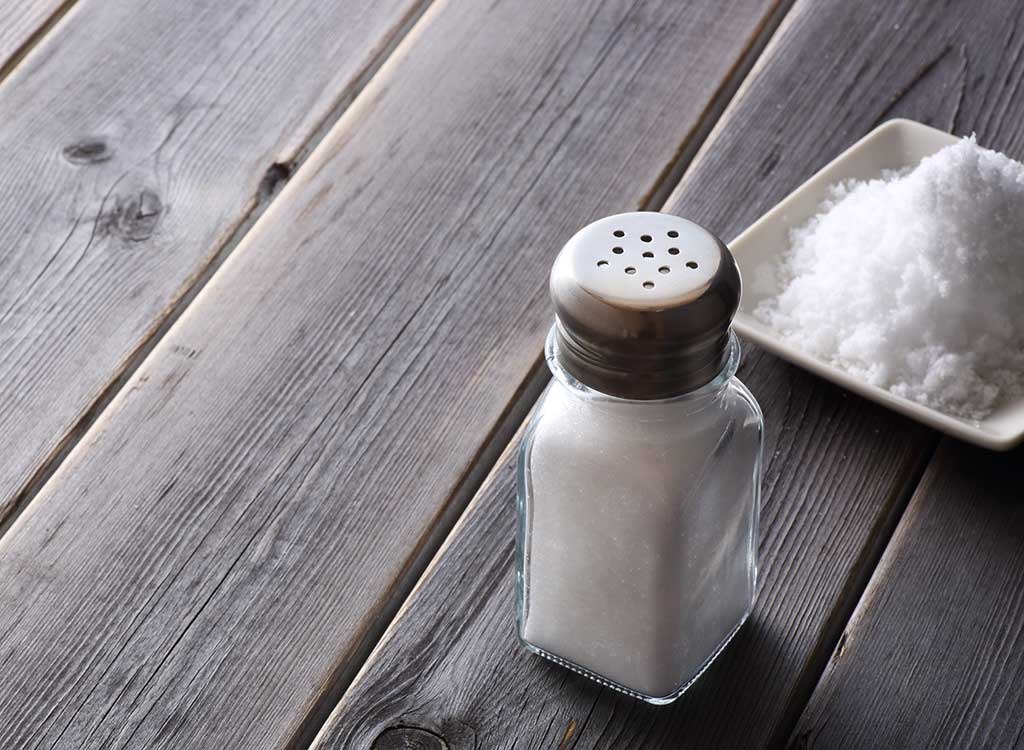
Sodium will bloat you and cause your stomach to retain fluid, and The Nutrition Twins say this will even carry over to your fingers, ankles, and feet. And the only thing worse than your favorite jeans not fitting is your favorite ring not fitting, either. To boost flavor sans salt, experiment with dried spices like red chili pepper flakes, garlic powder, and freshly ground black pepper. Or, try adding a spritz of lemon or vinegar to your favorite dish. And remember that just because it doesn’t taste salty, doesn’t mean it isn’t loaded with sodium. Case in point: These 20 Restaurant Desserts With More Salt Than A Bag of Pretzels.
Ditch family-style serving bowls
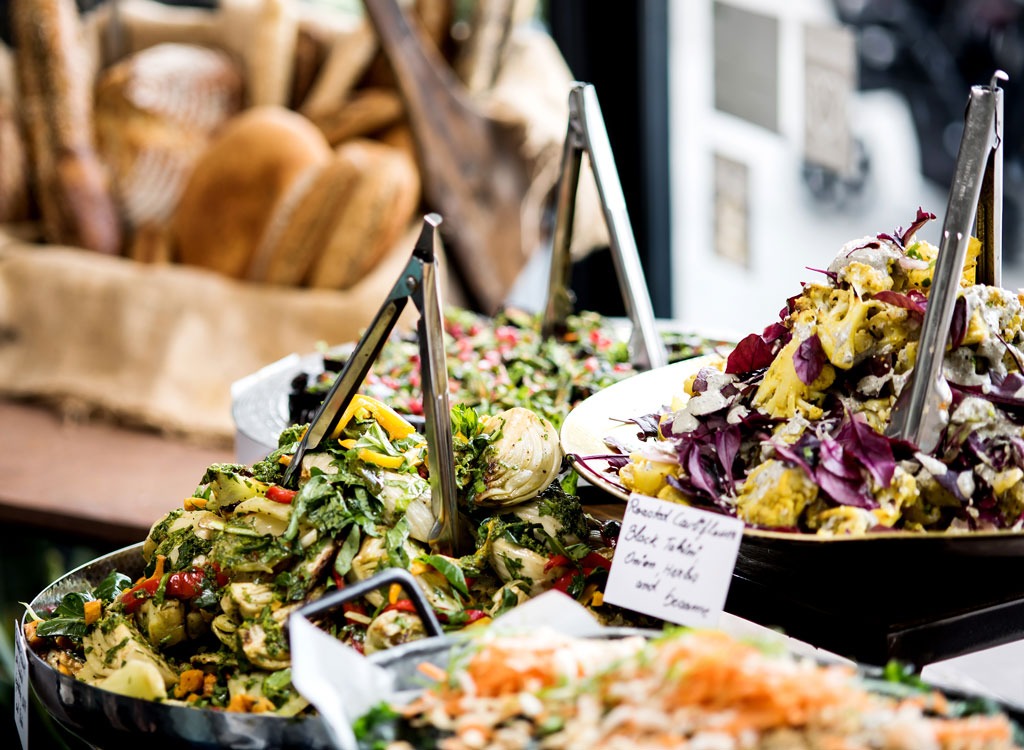
“Serve yourself from the counter instead of turning dinner into a buffet- or family-style where it’s harder to monitor your total consumption,” says Lewis. If it’s out of sight, it’s easier to keep that second helping of spaghetti and meatballs out of mind.
Be a conscious eater

To promote conscious eating: “Eat in a relaxed environment, turn off the TV, play some music, and even light a few candles,” says celebrity nutritionist Lisa DeFazio, MS, RDN. “By taking your time eating and chewing food so you really taste it, you’re helping to aid digestion and slowing yourself down, which prevents overeating.”
And follow this chewing rule

Get ready to get your count on and aim for 20 chews before swallowing. “When you swallow too quickly, you’re likely to swallow air, which causes stomach bloat,” say The Nutrition Twins.
Never eat out of a bag
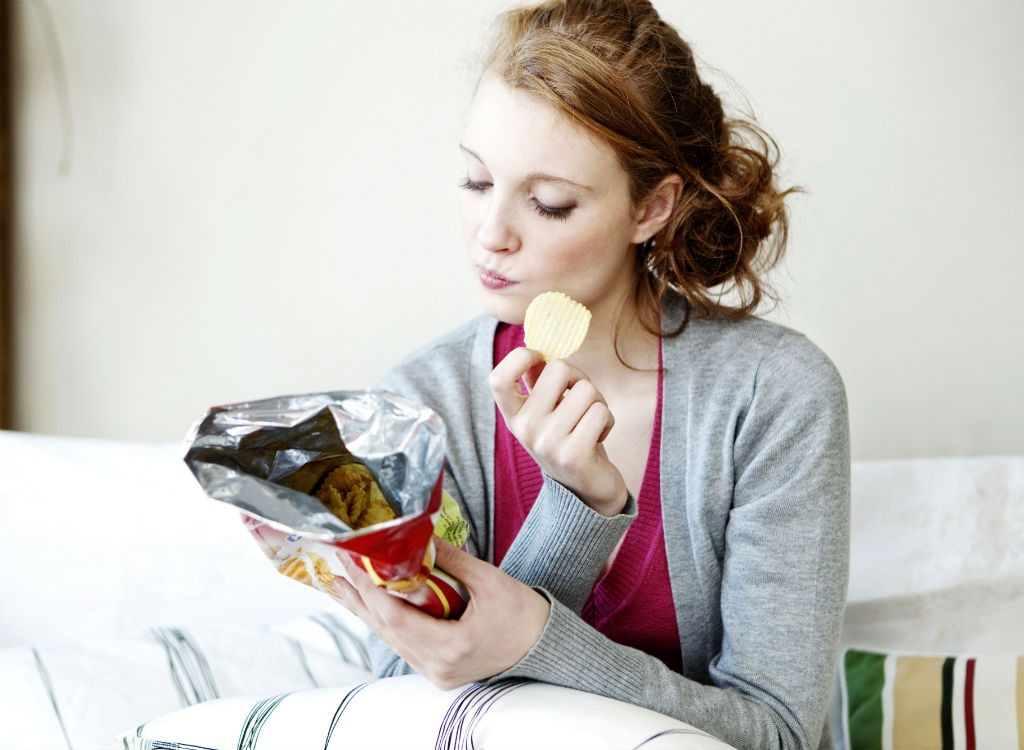
Or a box, for that matter. “Sit down to a carefully-set plate at the table. Munching mindlessly straight out of a bag or box while you’re standing at the pantry deciding what you want to eat leads to overeating—typically from snack foods which are usually high in salt and sugar, both which lead to stomach bloat,” say The Nutrition Twins. “Planning what you’re going to eat and sitting down to a predetermined portion on a plate eliminates this problem.”
Feast on fiber-rich food
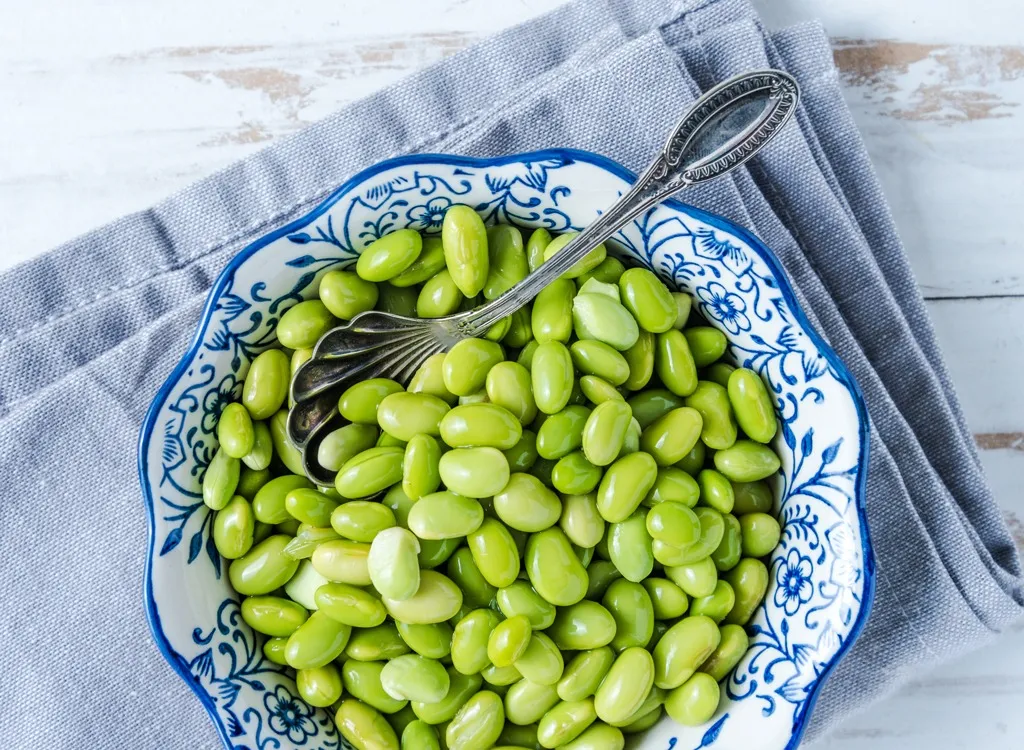
Fiber is critical to our digestive health and slows down hunger cravings by keeping us full for longer. “Think whole grains, beans, fruits, and veggies,” Lewis says. “Wash and cut up fresh fruits and veggies as soon as you bring them home, so they can be grabbed easily, and put them where they can also be easily seen as a visual cue to eat more of them.”
Shredded coconut, cocoa powder, and popcorn are also surprisingly good sources of fiber for weight loss.
Use your non-dominant hand
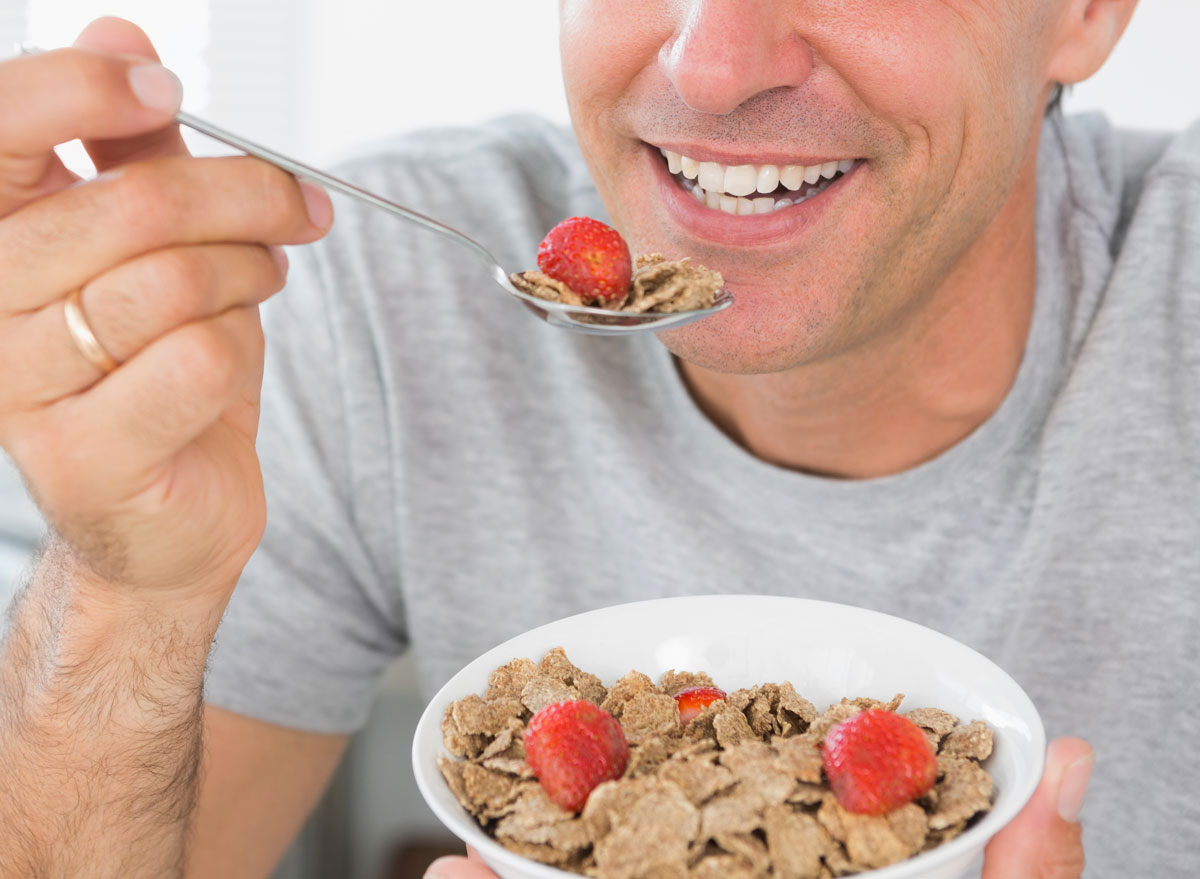
According to Lewis, studies show that people who use this technique reduce their food intake by an average of 30 percent. “It’s not as easy as it sounds, and the disruption to our normal behavior causes us to be more mindful of how much we are eating,” says Lewis.
Be a sugar sleuth
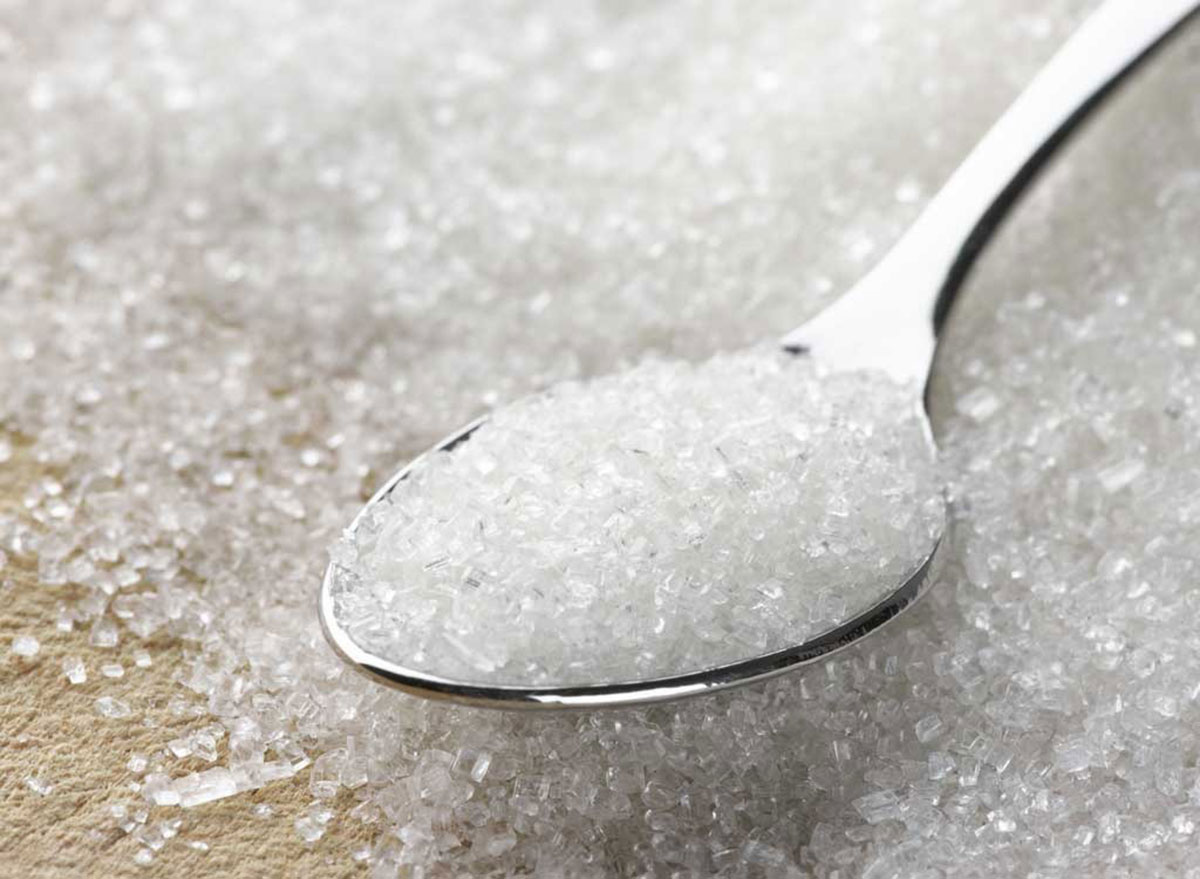
“Sugar is the hardest to monitor in our food system and, leads to weight gain and bloating when consumed in excess,” says Hayim. “There is no mandatory label for added sugar, and therefore, it’s hard to tell if the sugar occurs naturally in the packaged food, or is being added. A good rule of thumb when choosing foods, is to aim for less than 10 grams per serving.”
Eat a salad first
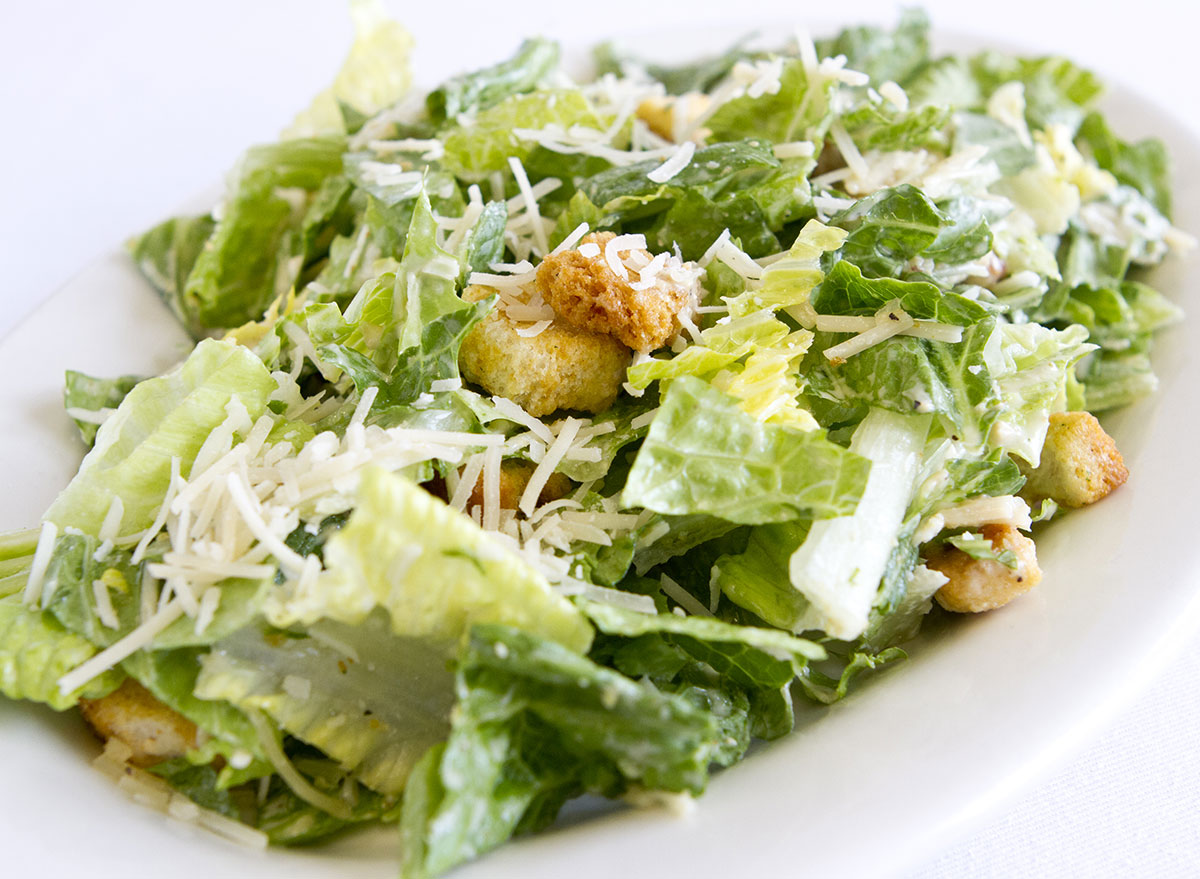
This strategy makes a huge difference when it comes to shedding belly fat. “[Before dinner,] prepare a salad and eat that first,” says DeFazio. “Do this even before putting the entrée on your plate.” This will give you a fiber-boost before you even start with your main course, as well as flood your body with nutrients from veggies.
Nosh on some ginger
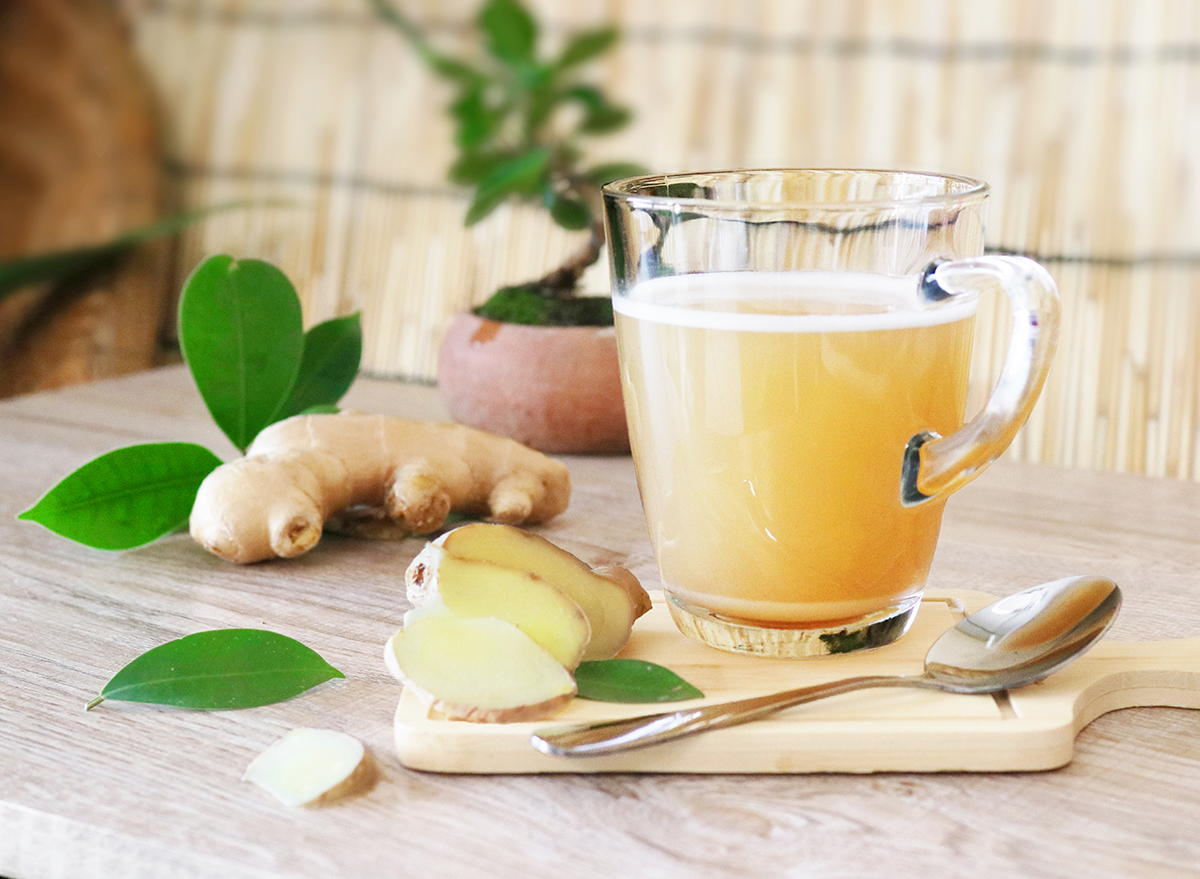
“Adding ginger to your foods or beverages is a great way to reduce bloating and get you a flatter stomach,” says Hayim. “It soothes the digestive system, helping it to relax, and [it] also works as a natural anti-inflammatory.”
Befriend cukes
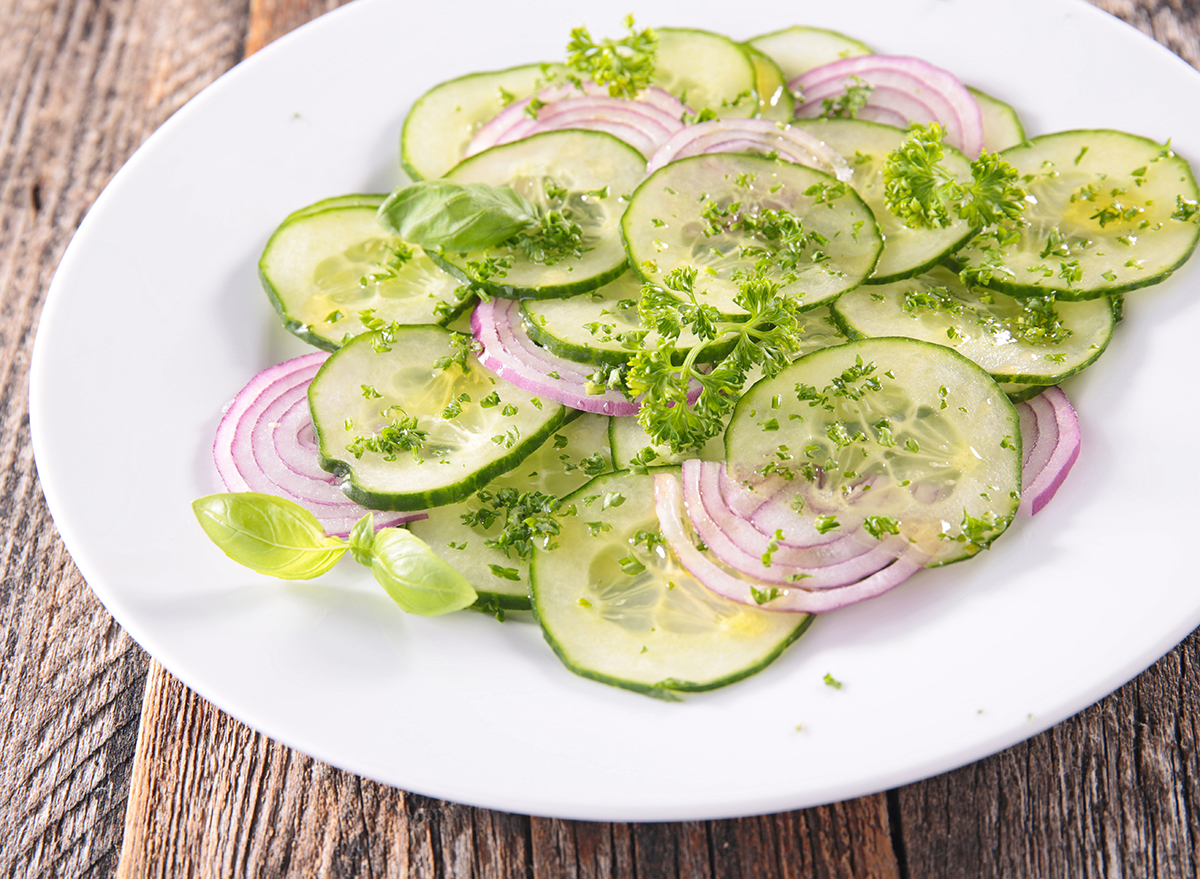
“Cucumbers contain quercetin, a flavonoid antioxidant that helps reduce swelling, and even bloating of the abdominal region,” says Hayim. They’re just one of the quercetin superstars you should consider incorporating into your diet.
Eat asparagus
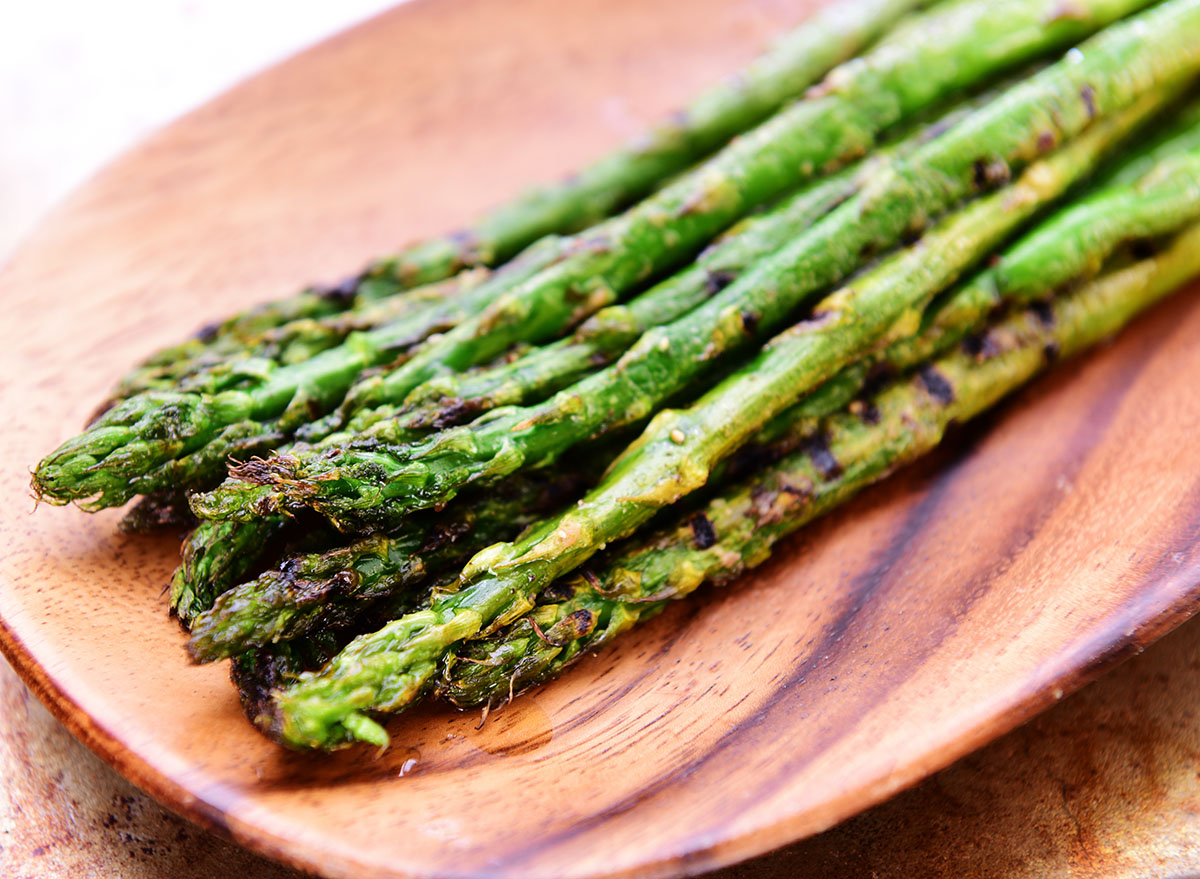
Just get over what it does to your urine, and dig in, already! “Asparagus is famous for its anti-bloating and diuretic effects,” says Hayim. “It finds the excess water in your body and pulls it out, alleviating discomfort and bloating. It also contains characteristics that help the good bacteria live in your gut for the promotion of healthier digestion and gas prevention.”
Focus on magnesium and potassium
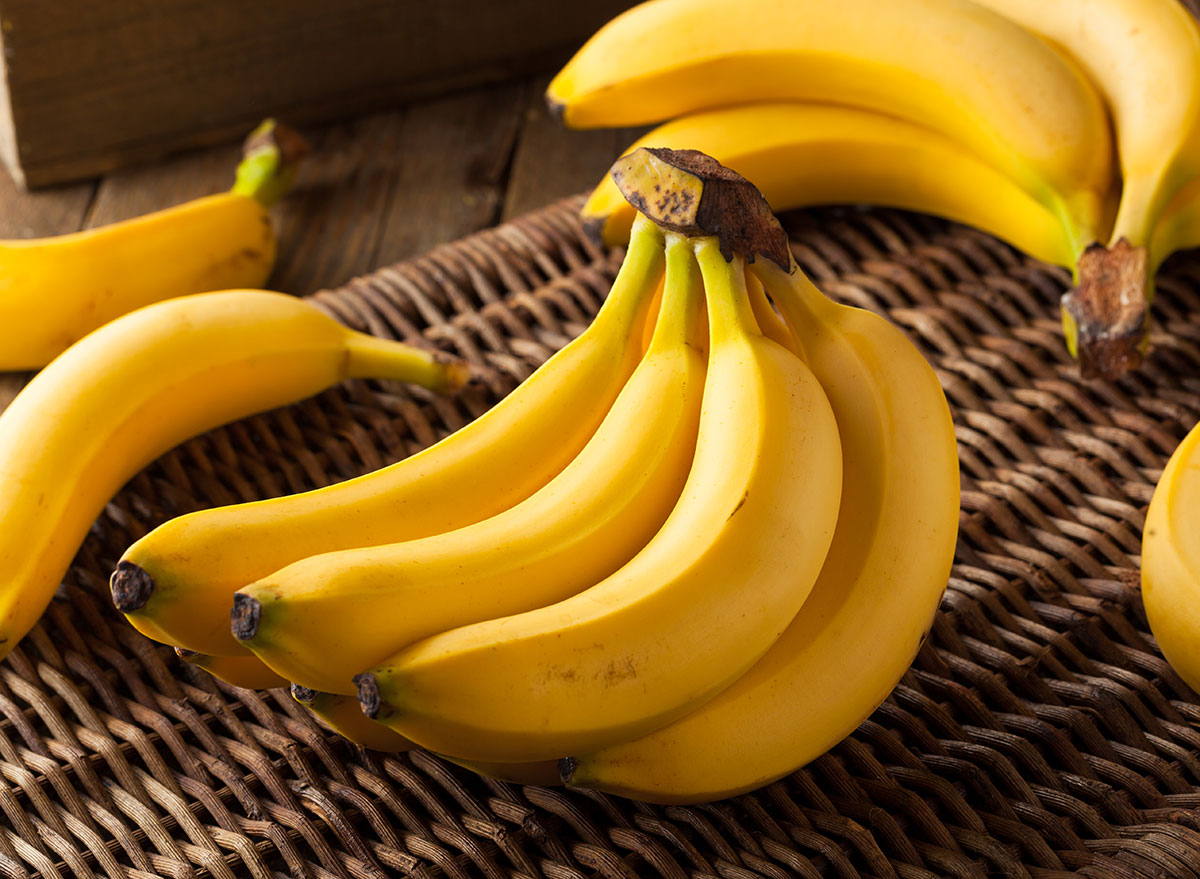
Potassium and magnesium are a power duo when it comes to beating bloat. “Both are electrolytes, along with sodium, calcium magnesium, and phosphate. And often, bloating is a symptom of electrolyte imbalance,” says Lewis. “Bananas, potatoes, acorn squash, and dried fruits are a great source of potassium, while leafy greens (think spinach, kale, swiss chard) and pumpkin seeds are a good source of magnesium.”
Spoon on the sauerkraut

Or at least get cozy with it as a regular staple in your diet, along with other fermented foods. “Kefir, Kimchi, kombucha, and sauerkraut are all excellent food sources of probiotics, which are critical to the digestive health and populate our intestines with beneficial bacteria,” says Lewis.
Put your cell on silent
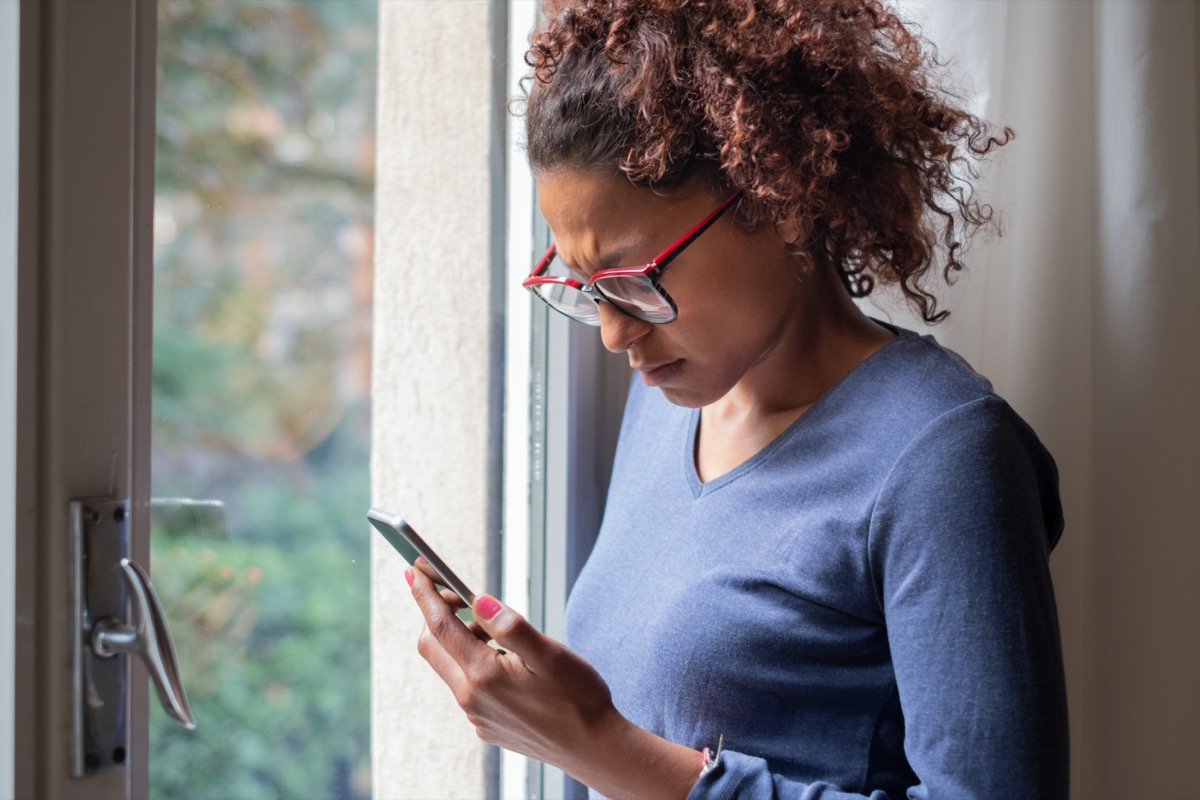
And stop tapping on that laptop while you eat dinner. “When you eat, just eat. Turn off the electronics, which make you mindless and unaware of how much you are consuming,” Lewis says. “Take the time to savor foods instead.”
Just wait five minutes

C’mon, you can muster enough courage to do it when waiting in line or on hold on a call, right?. “Always wait five minutes before taking second helpings,” says DeFazio. “Drink your water—you may be thirsty instead of still hungry!”
And did we mention you should be drinking water throughout the whole course of your meal? This trick works particularly well at the office, too. When you think you’re hungry enough for an afternoon vending machine trip, wait five minutes and walk around the block or up and down the stairwell a few times and see if you still want the indulgence.
Drink water as soon as you wake up
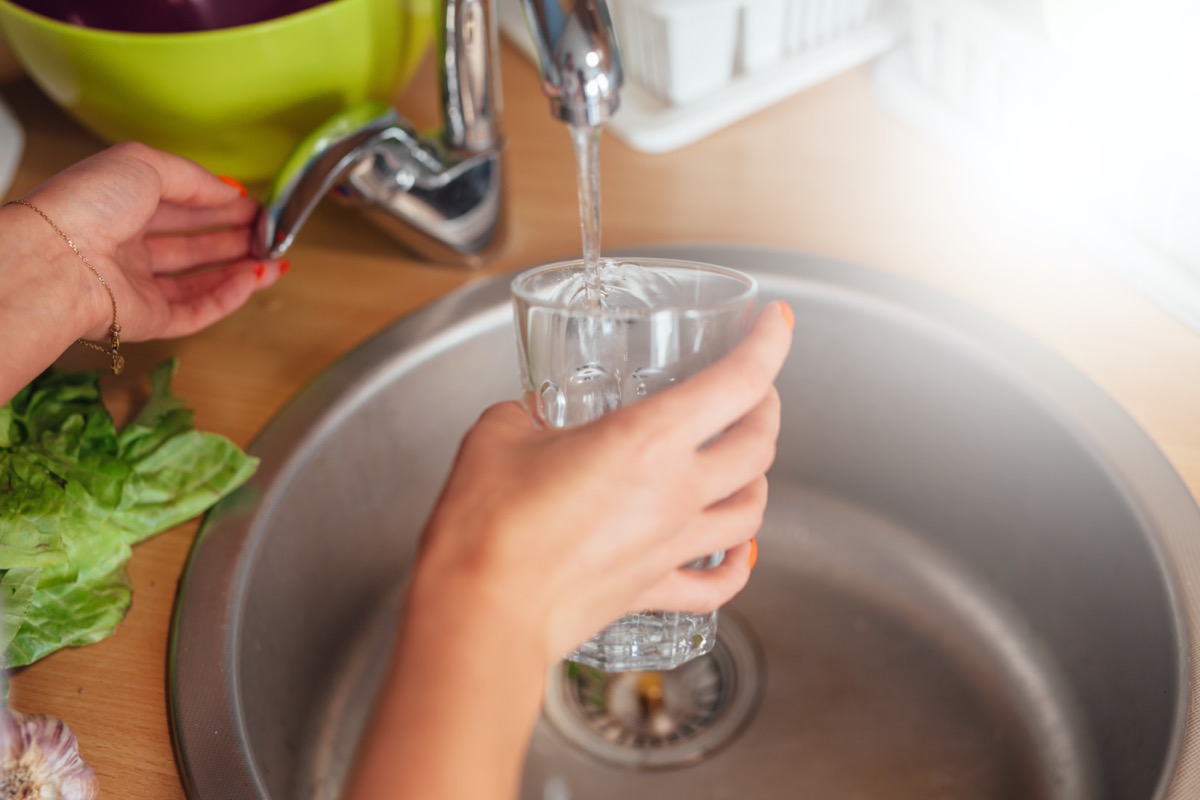
Your should chug at least 8-16 ounces of water, even before your morning coffee or tea. “This helps to detoxify, wake up your body, and can help digestion and bowel movements,” Hayim says.
“It will help to flush sodium and the bloat that typically comes with it while restoring normal hydration from the fluid losses from sweat and breathing overnight,” say The Nutrition Twins.
Lunch on your leftovers
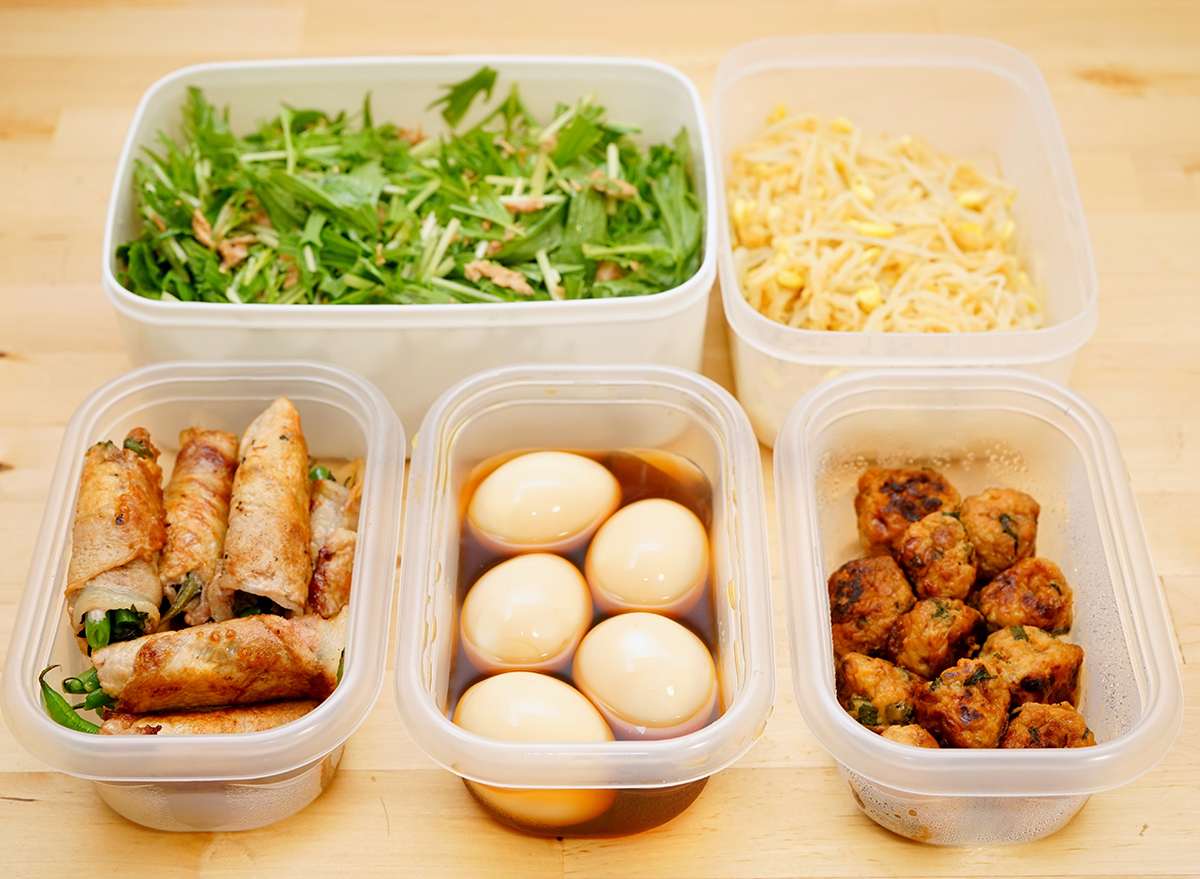
“Pack up your leftovers for lunch the next day,” says DeFazio. All too often, we commit to cooking a healthy, home-cooked meal for dinner and leave any leftovers for dinner another night. By packing ’em up for lunch instead, you ensure you keep the healthy eating cycle going into the next day and avoid the temptation of grabbing fast food or unhealthy cafeteria food at the office.
Eat real and eat clean

“Eating clean, real food means eating foods that are unprocessed and pure,” says Hayim. “When we eat clean, we eat food that can be processed more quickly and more efficiently. We also avoid a ton of sodium that is added to preserve shelf life, and we become more aware of sauces, dressings, and the like that tack on calories, fat, and added sugar.”
Read labels
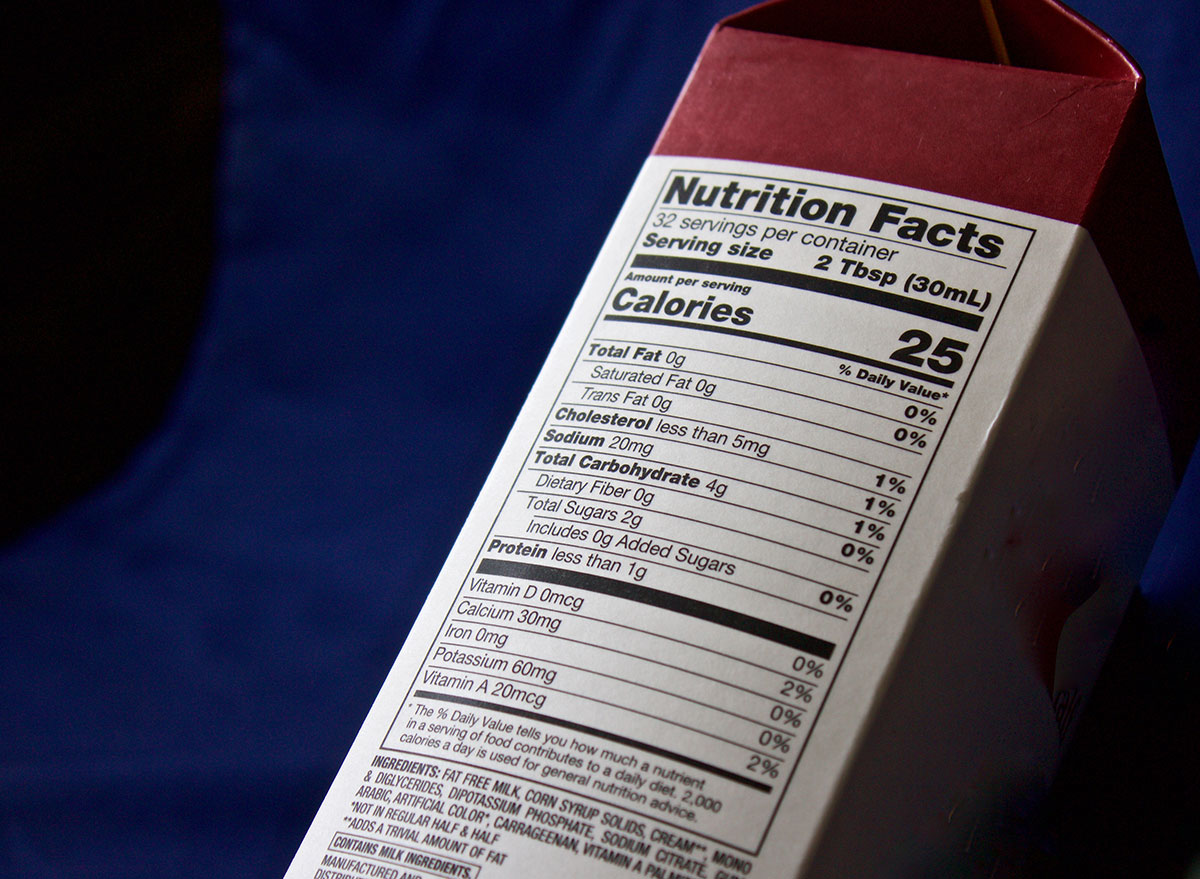
There are a few easy rules to keep in mind: “When reading the label from top to bottom, the first food will be the ingredient that mainly makes it up, and the last one will be the least present in the product,” says Hayim. “Look for sugar to be as low on this list as possible.” Ditto for other bad-for-you ingredients like partially-hydrogenated oils, salt, artificial preservatives, and anything ending in -ose (which is code for “sugar”).
